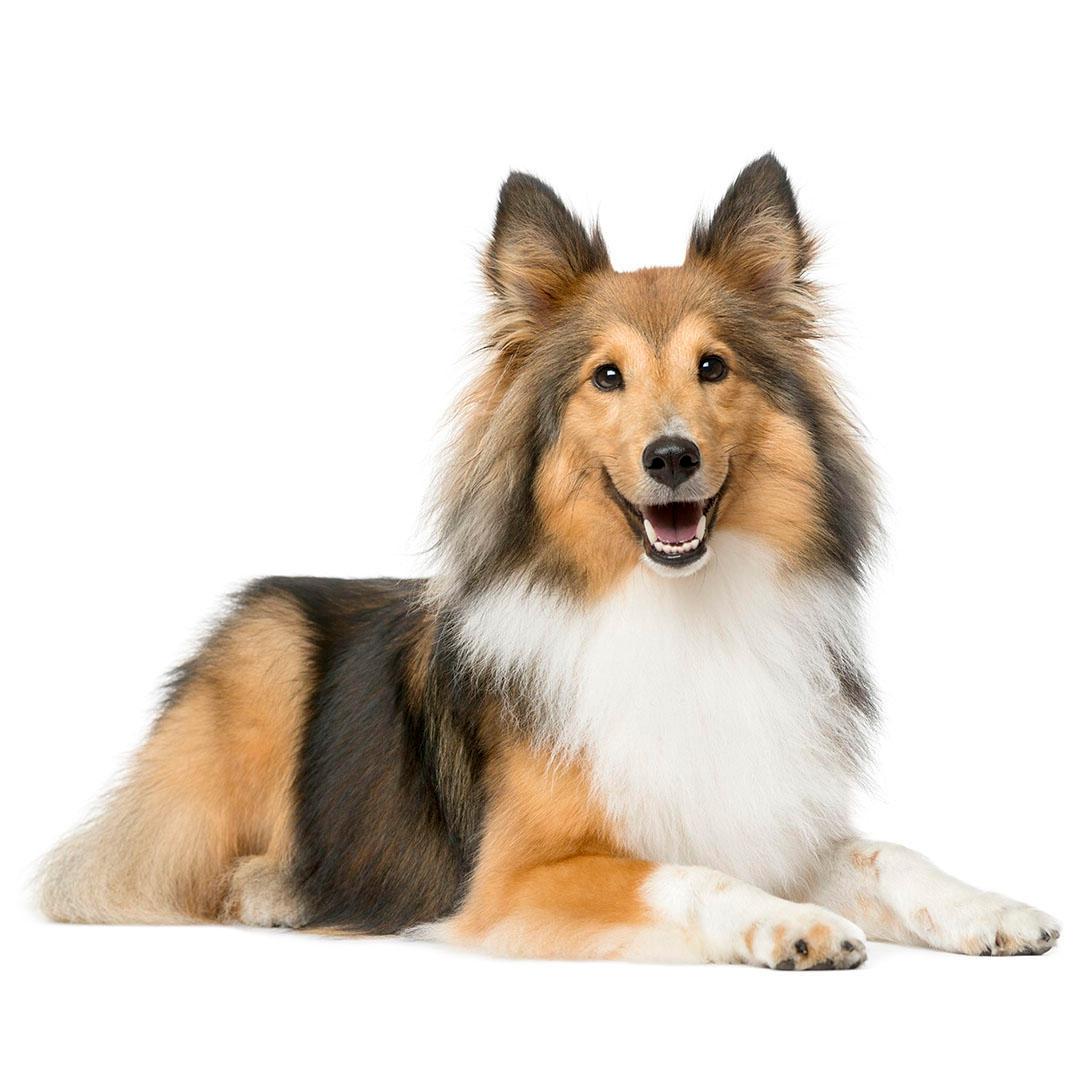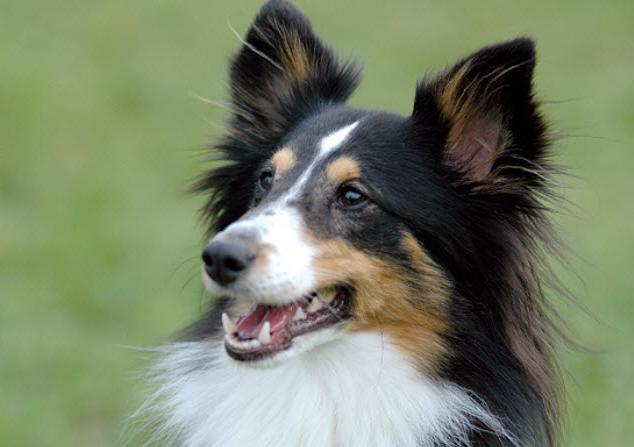- Breed Category: Herding
- Country of Origin: Scotland
- Average Height: Males 37-41 cm, Females 35-39 cm
- Average Weight: Males 6-12 kg, Females 6-10 kg
- Average Life Span: 12-14 years
- Grooming Requirements: Regular brushing, especially during shedding
- Exercise Requirements: Daily walks and playtime
- Coat Type: Double coat, long and dense
- Coat Color Variations: Sable, black, blue merle
- Shedding Level: Moderate to high
- Ear Type: Semi-erect
- Tail Type: Long, feathered
- Temperament: Intelligent, loyal, gentle
- Intelligence Level: Very high
- Barking Tendency: High, alert and vocal
- Compatibility with Children: Good, with supervision
- Compatibility with Other Pets: Generally good
- Training Ease: Highly trainable
- Common Health Issues: Hip dysplasia, eye problems
- Dietary Needs: High-quality dog food, balanced diet
- Energy Level: High
- Drooling Tendency: Low
- Sensitivity to Weather: Sensitive to heat
- Overall Maintenance Level: Moderate
- Original Purpose: Herding sheep
- Year of Recognition by Kennel Clubs: 1911
- Apartment Friendly: Yes, with sufficient exercise
- Best Suited For: Active families, rural or suburban homes
- Cost of Ownership: Moderate
- Unique Traits: Collie-like appearance, smaller size
- Popularity Rank: Popular in herding group
The Shetland Sheepdog, often affectionately called the “Sheltie,” is a small, agile herding dog known for its intelligence and loyalty. Originating from the rugged Shetland Islands of Scotland, these dogs were bred to herd sheep and protect farms. Their keen instincts and quick learning make them excellent companions for active families.
“The Shetland Sheepdog is a master of agility and obedience, making it a favourite among dog enthusiasts,” says Dr. Emily Carter, a renowned canine behaviourist.
This article aims to delve into the Sheltie’s unique characteristics, rich history, and essential care tips. Whether you’re considering adding a Sheltie to your family or simply curious about this charming breed, you’ll find valuable insights here.
History and Origin

Early Development of the Breed
The Shetland Sheepdog’s roots trace back to the Shetland Islands, where they were developed to be small yet hardy herders. These islands, known for their harsh weather and rugged terrain, required a dog that was both resilient and intelligent. The Sheltie was bred from a mix of small working collies and other local breeds, resulting in a dog that could handle the demanding environment. Their size was particularly advantageous, as smaller dogs required less food, a crucial factor in the resource-scarce islands.
Role in Scottish Farming and Herding
In the world of Scottish farming, Shelties were indispensable. Their primary role was to herd sheep, but they also kept farms free from pests and protected livestock from predators. Their agility and quick reflexes made them perfect for navigating the rocky landscapes of the Shetland Islands. Farmers valued them not just for their work ethic but also for their loyalty and companionship.
Key Historical Figures
Several key figures played a role in the Sheltie’s development. Early 20th-century breeders like James Loggie were instrumental in refining the breed, focusing on enhancing their herding abilities and temperament. These pioneers ensured that the Sheltie maintained its working dog roots while also becoming a beloved family pet.
Physical Characteristics

Appearance
The Shetland Sheepdog is a compact and elegant breed, typically standing between 33 to 41 centimetres tall at the shoulder. Their double coat is a standout feature, with a dense undercoat and a long, straight outer coat that comes in a variety of colours, including sable, black, and blue merle. Distinctive white markings often grace their chest, legs, and tail tip, adding to their striking appearance.
Unique Physical Traits
One of the Sheltie’s most remarkable traits is its agile and graceful build. This breed is known for its nimbleness, making it a natural at agility courses and other canine sports. Their expressive eyes and alert ears give them an intelligent and inquisitive look, always ready to respond to their owner’s commands. The Sheltie’s tail, carried low and slightly curved, adds to their overall balance and poise.
Temperament and Behaviour

Typical Personality Traits
Shetland Sheepdogs are renowned for their loyalty and intelligence. These dogs form strong bonds with their families, often becoming a shadow to their favourite person. Their intelligence is evident in their quick learning and problem-solving abilities, making them a joy to train. Shelties are also known for their high energy levels, requiring regular exercise to keep them happy and healthy.
Suitability as a Family Pet and Working Dog
Shelties are versatile, excelling as both family pets and working dogs. Their gentle nature and eagerness to please make them ideal companions for families. They thrive in environments where they can be active and engaged, whether it’s herding on a farm or participating in dog sports. Their herding instincts remain strong, so they often enjoy tasks that challenge their minds and bodies.
Interaction with Children and Other Animals
With children, Shelties are typically patient and protective, making them great playmates. They tend to get along well with other animals, especially if socialised from a young age. However, their herding instincts might lead them to try and herd smaller pets, so supervision is recommended. Overall, their friendly and adaptable nature makes them a wonderful addition to any household.
Training and Exercise Needs

Importance of Early Training and Socialisation
Getting a Sheltie off to a good start with early training and socialisation is crucial. These dogs are naturally intelligent and eager to learn, so introducing them to various environments, people, and other animals early on helps them grow into well-rounded adults. This early exposure can prevent behavioural issues and ensure they are confident and adaptable in different situations.
Recommended Training Techniques
Positive reinforcement is the way to go with Shelties. They respond well to praise, treats, and play as rewards for good behaviour. Consistency is key, so short, regular training sessions work best. Incorporating fun activities like agility or obedience games can keep them engaged and make learning enjoyable for both of you.
Daily Exercise Requirements and Activities They Enjoy
Shelties are energetic and need daily exercise to stay happy and healthy. A mix of walks, playtime, and mental stimulation is ideal. They love activities like fetch, agility courses, and even herding games. Keeping them active not only satisfies their physical needs but also keeps their sharp minds busy.
Health and Lifespan

Common Health Issues
Shetland Sheepdogs, like many purebred dogs, can be prone to certain health issues. Common concerns include hip dysplasia, eye problems like progressive retinal atrophy, and thyroid disorders. Regular vet check-ups are essential to catch any potential issues early. Being aware of these conditions can help you take proactive steps to ensure your Sheltie stays healthy.
Average Lifespan and Health Tips
Shelties typically enjoy a lifespan of 12 to 14 years. To help them live a long, healthy life, provide a balanced diet, regular exercise, and mental stimulation. Keeping their weight in check is crucial, as obesity can exacerbate health problems. Regular grooming is also important to maintain their beautiful coat and prevent skin issues.
Preventative Care Recommendations
- Schedule regular veterinary visits for vaccinations and health screenings.
- Maintain a consistent grooming routine to keep their coat and skin healthy.
- Provide a balanced diet tailored to their age and activity level.
- Engage them in regular physical and mental activities to keep them fit and happy.
- Consider genetic testing for hereditary conditions if you’re planning to breed.
Grooming and Maintenance
Coat Care and Grooming Routines
The Shetland Sheepdog’s double coat is a defining feature, requiring regular attention to keep it looking its best. A weekly brush is usually enough to prevent tangles and mats, but during shedding seasons, more frequent grooming might be necessary. A slicker brush and a comb are your best friends here, helping to reach the dense undercoat and remove loose hairs.
Shedding and Seasonal Grooming Tips
Shelties are known to shed, especially during spring and autumn. During these times, daily brushing can help manage the extra hair and keep your home a bit tidier. A good bath every few months can also help, but be sure to use a dog-friendly shampoo to avoid skin irritation. Regular grooming not only keeps their coat healthy but also provides an opportunity to check for any skin issues or parasites.
Diet and Nutrition

Nutritional Needs for Optimal Health
Feeding your Sheltie the right diet is crucial for their health and vitality. These active dogs need a balanced diet rich in proteins, healthy fats, and essential vitamins. High-quality dog food, whether commercial or homemade, should be the foundation of their diet. Look for options that list meat as the first ingredient and avoid fillers like corn and soy.
Foods to Include and Avoid
Include lean meats, fish, and vegetables in their meals to provide necessary nutrients. Omega-3 fatty acids from fish oil can support their coat and joint health. Avoid foods high in artificial additives, sugars, and unhealthy fats. Chocolate, grapes, and onions are toxic to dogs and should be kept out of reach.
Feeding Schedules and Portion Recommendations
Establishing a consistent feeding schedule helps maintain their energy levels and prevents overeating. Typically, two meals a day work well for adult Shelties. Portion sizes depend on their age, weight, and activity level, so consult your vet for personalised advice. Always provide fresh water and monitor their weight to adjust portions as needed.
Fun Facts and Trivia

Interesting Tidbits about the Breed
Shetland Sheepdogs, or Shelties, are often mistaken for miniature Collies, but they are a distinct breed with their own unique history. Despite their small size, Shelties have a big bark, which they use effectively as watchdogs. Their intelligence ranks among the top in the canine world, making them quick learners and problem solvers. Interestingly, Shelties have a natural instinct to herd, and you might find them gently nudging family members or other pets around the house.
Famous Shetland Sheepdogs in Media or History
Shelties have made their mark in media and history. One of the most famous Shelties was “Lassie Junior,” who starred in the popular TV series “Lassie” during the 1950s. Although the original Lassie was a Rough Collie, Lassie Junior was a Sheltie, showcasing the breed’s versatility and charm. In the world of competitive dog sports, Shelties often excel in agility and obedience trials, consistently ranking among the top performers.
Final Thoughts

The Shetland Sheepdog is a remarkable blend of intelligence and loyalty. This breed’s rich history and versatile nature make it a cherished companion for many. From their herding origins in Scotland to their role as beloved family pets, Shelties offer both challenges and rewards to their owners. Their high energy and keen intelligence require commitment, but the bond formed is deeply rewarding. Consider welcoming a Sheltie into your home for a loyal and lively addition to your family.
